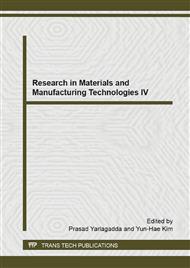p.170
p.175
p.180
p.184
p.189
p.193
p.201
p.205
p.209
Effect of Eu/Co Doping on the Resistive Switching Properties of BiFeO3 Thin Films
Abstract:
BiFeO3 and Eu/Co doped BiFeO3 thin films have been grown on Nb:SrTiO3 substrates with pulsed laser deposition using the same growth conditions. It was shown that the characteristic of resistive switching would be enhanced by Co doping. By changing the polarity of the external voltage, the BiFe0.95Co0.05O3 is witched between multilevel stable resistance states without an electroforming process. The resistance ratio is larger than two orders of magnitude and shows stable resistance states. The resistive switching is understood by the electric field-induced carrier trapping and detrapping, which changes the depletion layer thickness at the interface, oxygen vacancy and Co doping play important role in enhanced RS behavior. Keywords: Resistive switching, element doping, resistive switching mechanism.
Info:
Periodical:
Pages:
189-192
Citation:
Online since:
December 2014
Authors:
Price:
Сopyright:
© 2015 Trans Tech Publications Ltd. All Rights Reserved
Share:
Citation:


